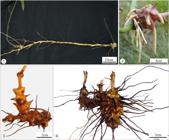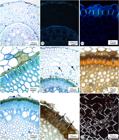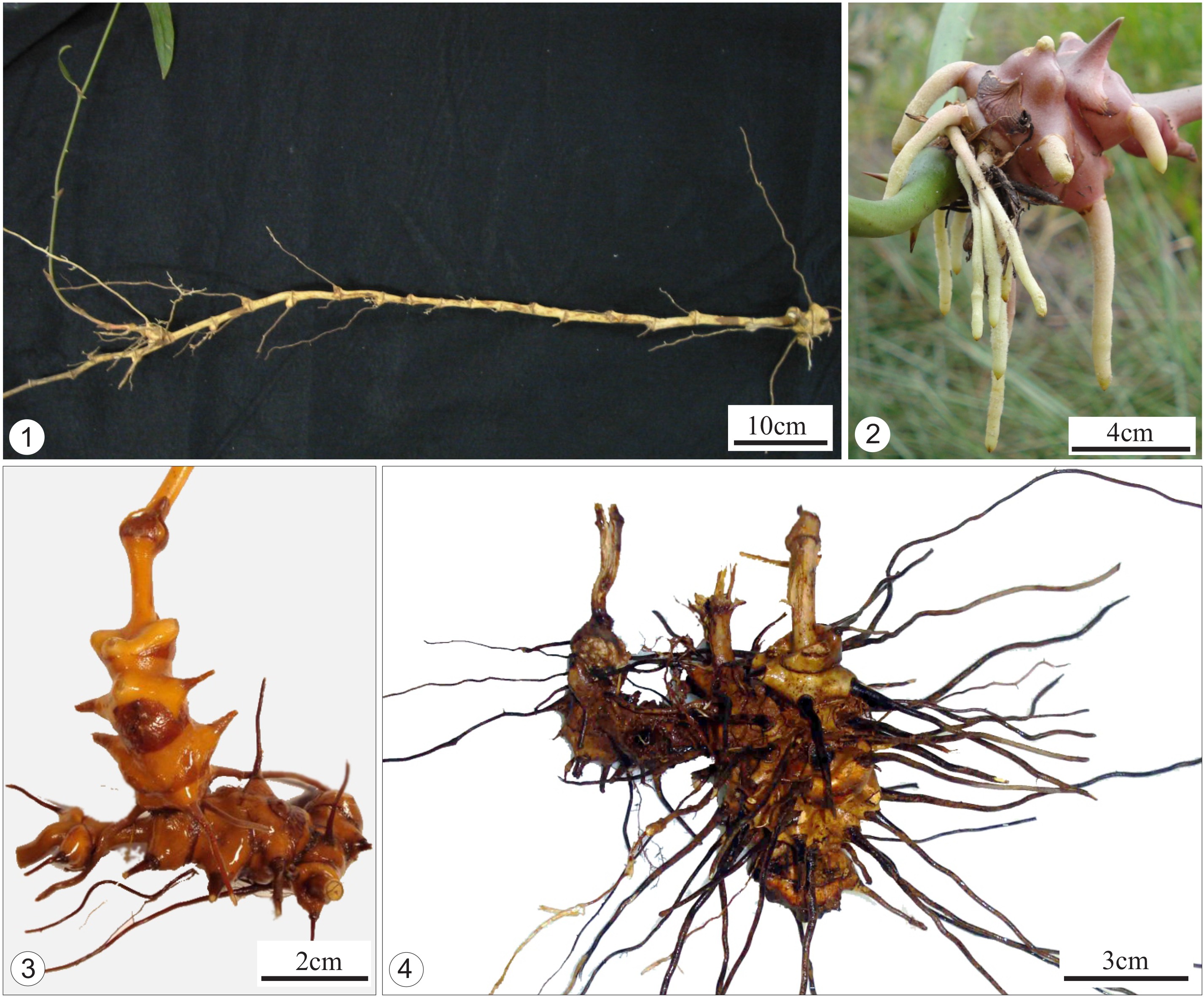Abstract
The species of the genus Smilax, popularly known as sarsaparilla, are widely used in folk medicine due to the antirheumatic properties of its underground structures. Smilax fluminensis and S. syphilitica occur in forested areas and form thickened stems called rhizophores from which adventitious roots grow. To provide information for more accurate identification of the commercialised product and for elucidating the process of stem thickening, a morphology and anatomy study of the underground organs of the two species was conducted. The adventitious roots differ in colour and diameter depending on the stage of development. They are white and have a larger diameter in the early stages of development, but as they grow, the adventitious roots become brown and have a smaller diameter due to the disintegration of the epidermis and virtually the entire cortex. In brown roots, the covering function is then performed by the lignified endodermis and the remaining walls of the cells from the last parenchyma cortical layer. These results are similar to those found in studies of other Smilax and suggest that the anatomy of the roots can be useful for identifying fraud in commercialised materials. The thickening process of the nodal regions of the rhizophores in both species involves the activity of axillary buds and pericyclic layers.
Keywords:
sarsaparilla;
Smilax
; underground system; rhizophore; anatomy

 Thumbnail
Thumbnail
 Thumbnail
Thumbnail
 Thumbnail
Thumbnail
 Thumbnail
Thumbnail
 Thumbnail
Thumbnail




